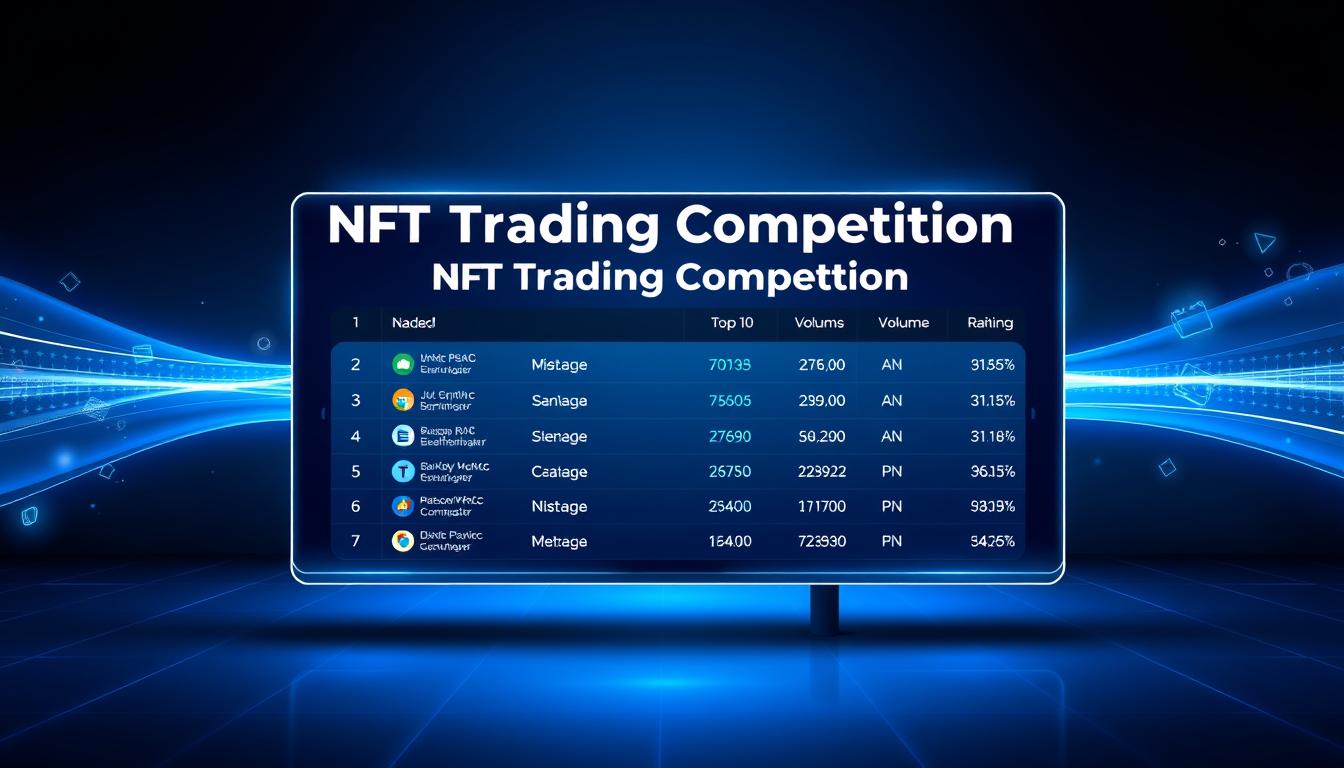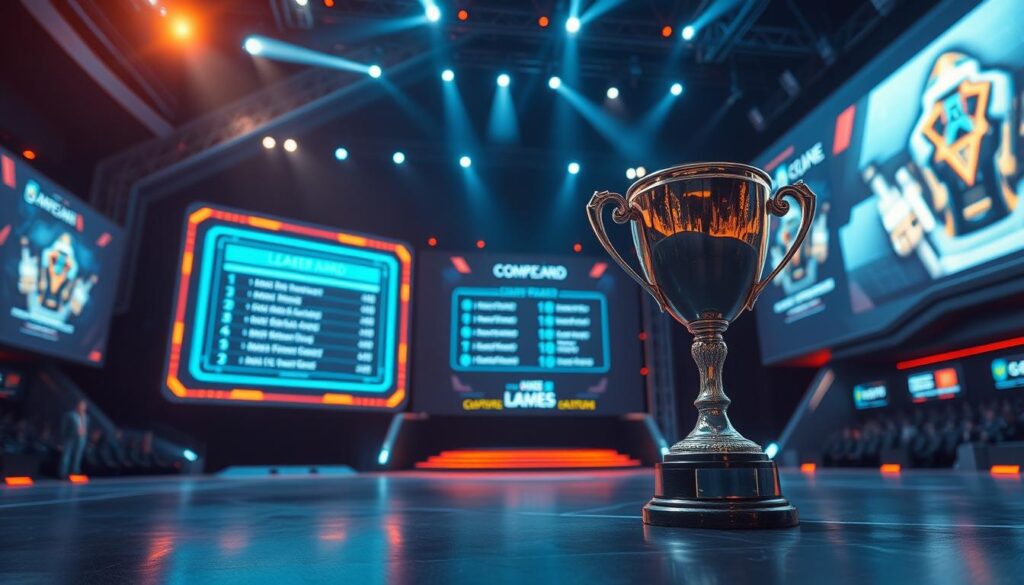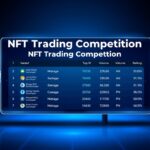Now Reading: Join NFT Trading Competitions with Prize Pools Today
- 01
Join NFT Trading Competitions with Prize Pools Today
Join NFT Trading Competitions with Prize Pools Today

The digital collectibles landscape is constantly evolving. A new and thrilling trend has emerged, offering enthusiasts a dynamic way to engage with their assets. These events combine strategy, skill, and the chance for significant gains.
These competitive gatherings are more than just games. They inject energy into the marketplace, encouraging active participation. This increased activity helps build stronger, more connected communities around favorite projects.
The basic idea is straightforward. Participants compete to achieve specific goals, like high trading volume or creative milestones. Success is tracked on public leaderboards, with top performers earning valuable rewards.
For American collectors, this presents a unique opportunity. It allows you to leverage your knowledge beyond traditional investing. You can test strategies and potentially monetize your expertise in a competitive setting.
This article will guide you through everything you need to know. We will explore different event types, from volume-based contests to creative challenges. You will also learn practical tips for getting started and maximizing your chances of success.
Key Takeaways
- Competitive events offer a new, engaging way to interact with digital assets.
- They help increase market activity and foster community growth.
- Participants compete based on metrics like trading volume or creative tasks.
- These events are ideal for those looking to apply strategic knowledge.
- Various formats exist, catering to different skills and interests.
- Leaderboards track progress and determine reward distribution.
- Both newcomers and experienced collectors can find suitable opportunities.
Exploring the NFT Trading Competition Landscape
What began as basic promotional activities has blossomed into complex, multi-faceted tournaments. These digital asset contests now attract thousands of enthusiasts and generate substantial activity across major platforms.
The evolution reflects a maturing ecosystem. Simple contests have transformed into sophisticated engagements with clear strategic dimensions.
Recent Trends and Market Impact
Major platforms increasingly use these events as powerful marketing tools. They help onboard new users while rewarding loyal community members.
The market impact is significant. These gatherings drive short-term price movements and increase collection visibility.
They create concentrated periods of high liquidity. This benefits both traders and project developers simultaneously.
The Allure of Competitive Prize Pools
The psychological appeal combines thrill with tangible incentives. This creates engaging experiences that keep people actively involved.
Reward structures have become more sophisticated. Tiered systems now distribute awards across larger numbers of winners.
This approach encourages broader participation. It makes success accessible beyond just top performers.
NFT Trading Competitions with Prize Pools: Rules & Rewards
Before entering any contest, a clear grasp of the mechanics and reward structures is essential. This knowledge separates casual participants from serious contenders.
How Competition Mechanics Work
Events typically track your activity based on trading volume. This can be calculated as net volume (buys minus sells) or gross volume (the total of all transactions).
Your standing is often displayed on a public leaderboard. Some contests use a raffle system. Here, each qualifying trade earns you a ticket for a random draw.

Understanding Reward Distribution and Eligibility
Not every user automatically qualifies. Common requirements include verified accounts and specific geographic locations. You may also need to register before a deadline.
Organizers enforce strict rules to ensure fairness. Wash trading and using multiple accounts are strictly prohibited.
Rewards are often distributed in tiers. This means more traders receive a share of the pool. Winners are usually announced after a verification process.
- Account verification is mandatory.
- Adherence to anti-manipulation policies is critical.
- Prizes are distributed post-event after winner validation.
Highlights from Leading NFT Competitions
The Lumiterra and Kraken events demonstrate contrasting strategies for rewarding participant achievements. These real-world examples showcase how platforms structure engaging experiences for different skill sets.

Lumiterra NFT Trading Contest Overview
This gathering ran from November 28 to December 8 on Mavis Market. It featured a combined reward worth 20K RON distributed through dual systems.
The leaderboard allocated 14K RON to the top 100 traders based on volume. Simultaneously, a raffle system distributed 4.1K LUA plus rare digital assets.
Participants earned tickets by achieving $10+ in net volume. Bonus tickets rewarded those finishing in top performance percentiles.
Insights from the Kraken NFTournament
This creative-focused event celebrated NCAA basketball through six unique rounds. It offered rewards valued over $50,000, including a championship Azuki worth $23,300.
The structure separated existing and new clients into distinct tiers. Each round selected one winner from each tier, ensuring broad opportunity.
Challenges included caption contests, mascot design, and poetry slams. Winners like @N8TheChef demonstrated the event’s creative diversity.
Conclusion
Digital asset contests represent a dynamic frontier for collectors seeking active engagement. These events offer significant opportunities beyond passive collecting, blending entertainment with financial incentives.
The diversity of formats ensures something for every participant. From volume-based challenges to creative showcases, different skills find rewarding outlets. This variety strengthens the entire ecosystem.
Understanding rules and eligibility remains crucial for success. Strategic preparation aligns individual goals with appropriate competitions. Responsible participation maintains integrity for all involved.
The future looks bright for these engaging gatherings. As formats evolve and prize pools grow, new opportunities regularly emerge. Stay informed about upcoming events like the Sireyan competition to maximize your participation.
FAQ
What is the main goal of participating in these events?
The primary objective is to engage in a structured contest where individuals aim to achieve the highest trading volume or other set targets. Successful participants earn a share of the reward pool, gaining both financial incentives and recognition within the community.
How are the rewards typically distributed among winners?
Rewards are usually allocated based on final rankings. The top performer often receives the largest portion of the prize pool, with subsequent shares distributed to other high-ranking contestants. Specific distribution details are always outlined in the official rules before the event begins.
Can anyone join these competitive events?
A> Most contests are open to all users who register on the hosting platform, such as OpenSea or Blur. However, some may have specific eligibility requirements, like holding a certain asset or being in a particular region. It’s crucial to check the official terms for each event.
What strategies can improve my chances of winning?
A> A successful strategy often involves careful market analysis, timing your transactions effectively, and staying informed about popular collections. Focusing on high-volume assets and managing risk are also key factors that can enhance your performance during the contest period.
Are there any risks involved in joining these contests?
A> Yes, participants are exposed to standard market volatility and the potential for financial loss based on their trading decisions. It’s important to only use capital you are comfortable risking and to fully understand the contest mechanics before entering.














